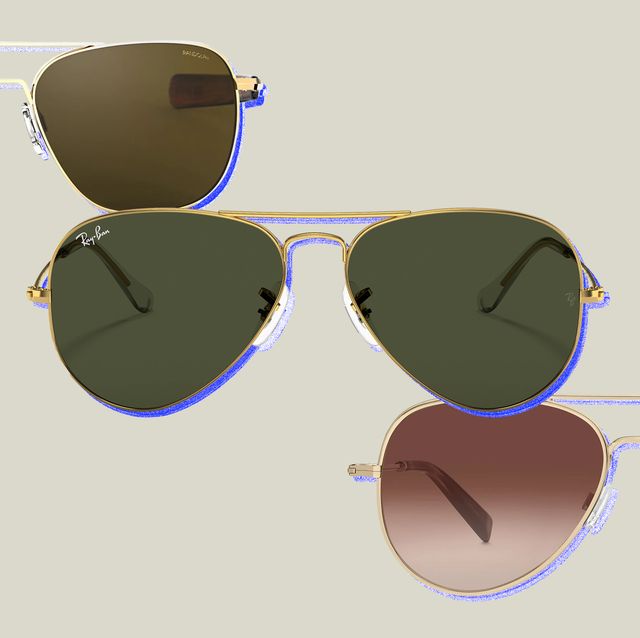




The aviator sunglasses we know today were first developed in the 1930s by Bausch & Lomb for pilots. Now, they're everywhere — and just as advanced.

This definitive guide to aviator sunglasses explores everything you need to know about America's most iconic eyewear, including history, lens hues and the best ones to buy.
Aviator sunglasses date back to 1936, when the U.S. Armed Forces, seeking a solution to help fighter pilots deal with eye strain at higher altitudes, teamed up with third-party designers to produce eyewear that countered light. The result is one you’re likely familiar with: It featured convex tear-drop glass lenses made from G-15 tempered glass, which transmitted 15 percent of incoming light and thin metal frames.
Today, aviators are offered by countless brands. While lenses, details and price points vary widely, they all stem from the same military aesthetic — one that champions simplicity, functionality and versatility.
The aviator sunglasses we’re familiar with today were first developed in the 1930s by Bausch & Lomb for military pilots. Prior to this, pilots wore goggles to protect their eyes in the air, where high altitudes introduced several optical dangers. Aside from the glaring sun, sub-zero temperatures also posed a threat. Tinted goggles were meant to protect pilots from both of these.
But, a major issue with these goggles was fog. Temperature differences between the air within the goggles and outside of the goggles often caused the lenses to fog up, obscuring the pilot’s view. The problem would be exacerbated if a pilot decided to doff their goggles and expose themselves to the blinding sun or the extreme cold.
Such was the case with pilot Shorty Schroeder whose eyeballs froze just minutes after he took off his goggles during a record-breaking 33,000-foot high flight. Luckily, somehow, he was able to land the plane safely. His friend, John Macready helped him out of the plane and would attempt to break his record just a month later — in the same plane, no less.
Macready’s flight was a success, though he found that pilot goggles were insufficient in blocking light at such high altitudes. So, he turned to Bausch & Lomb to develop a better solution. What they came up with was a lightweight metal frame with teardrop lenses which helped provide coverage when looking below. But perhaps the most vital detail was the lenses themselves. Rather than a neutral grey tint, the lenses were actually dark green. And though the style has seen countless iterations in recent decades, one detail remains consistent for many — dark green lenses. As you might guess, the color choice isn’t just cosmetic.
This particular color choice was functional as the green tint helped cut out blue light, a significant issue for pilots flying above the cloud line. Not only that, but green lenses tend to reduce glare while also improving sharpness and contrast. The sunglasses were an immediate success and made their way through the military before eventually hitting the civilian scene. Bausch & Lomb dubbed the sunnies Ray-Bans, which would go on to be its own pretty successful brand.
Eventually, American Optical earned the rights of production for the military's standard issue shades, the U.S. Army Air Corps D-1 Sunglasses.
Learn more about Aviator sunglasses's signature hue.
Aviators flatter round-, heart- and square-shaped faces. To see what each one looks like, visit our comprehensive guide to all sunglass styles.
A round face shape implies your dimensions are roughly equal up and down and across. Plus, your jawline is soft, and your cheekbones are wide.
A heart-shaped face means your cheeks and forehead are wider than your jaw, which proves pointed.
The square face shape, like the round, is defined by nearly identical measurements all around — with one exception: your jawline is sharper and your sides straighter.